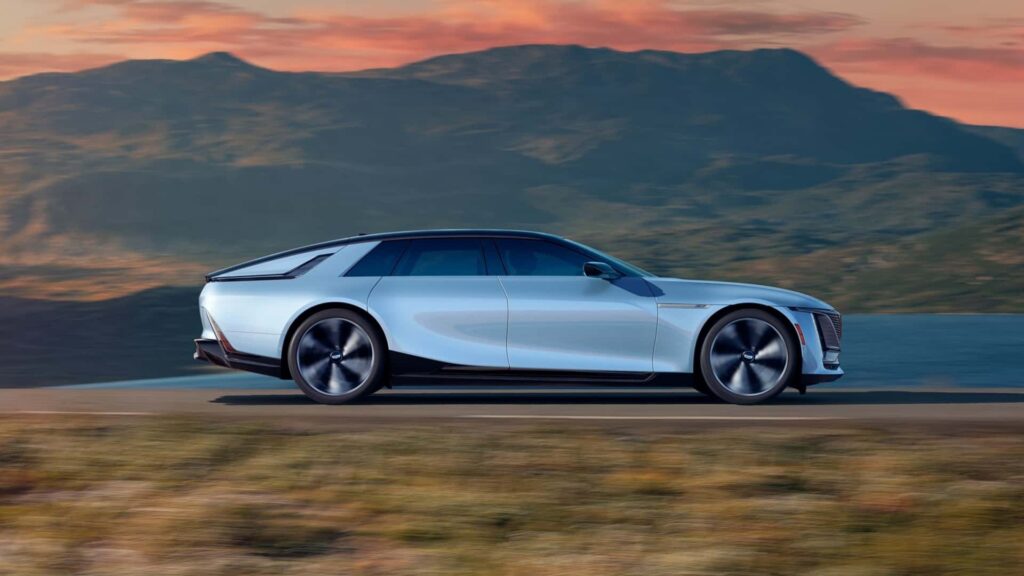- GM registered more than 300 patents while engineering the Cadillac Celestiq.
- The project resulted in 330 custom parts, including 115 built using additive manufacturing.
- Only a few hundred people will own one, but its DNA will live on in other Cadillac products.
Most luxury cars come with the same ol’ pitch—stiched leather, premium price tag, matrix headlights or maybe a champagne fridge if you’re that posh. But Cadillac’s $360,000 Celestiq? That comes with something else entirely: 300 unique patents and a small-scale manufacturing revolution that helped to build some of the most niche parts across the platform.
The Celestiq is hand-built in small batches on an $81 million line at GM’s Technical Center in Warren, Michigan. Considering that GM plans to only build 25 examples for 2025, it’s really less of a car and more of a rolling R&D program with taillights. And since most people reading this will likely never own one (myself included), let’s hope some of the cool innovation that went into the development of the Celestiq will work its way down into other vehicles across GM’s lineup.
Photo by: Peter Holderith / Motor1
Recently, GM published a press release that went over some of its advancements in additive manufacturing. Being a huge 3D printing nerd myself, I had to know more. Thankfully, Automotive News gave an even deeper dive into the Celestiq’s innovation, so we can take a deep dive into the car’s engineering today.
Let’s start with the metal. Celestiq uses a special 7000-series aluminum alloy that’s so hard, so heat-sensitive and so utterly uncooperative that working with it is basically like trying to train the most stubborn dog in the world. Seriously—you can’t stamp it, it’s nearly impossible to weld it and you can barely paint it.
“We had to come up with a new way to manufacture it for Celestiq,” said Tony Roma, executive chief engineer of Celestiq, in an interview with Automotive News. That’s where the fun begins.
Enter: GM’s Flexible Fabrication Lab.
This skunkworks division at Warren Tech Center had to design, build and prototype more than 330 custom parts for Celestiq. Once engineers verified and finalized a part, it had to ship the techniques, tools and even specialized machining parts to a GM manufacturing facility in Pontiac, Michigan that produces the components for the car.
As you can imagine, this process pioneered a ton of low-volume manufacturing techniques that GM can potentially reuse elsewhere. It also saved the automaker around $10 million in tooling, which sure sounds like a lot, until you remember the sticker price of the car.

Celestiq’s steering wheel center and seat belt guide loop are both products made with addative manufacturing.
Photo by: General Motors
The savings were at least in part thanks to additive manufacturing, a fancy name for 3D printing. In fact, the Celestiq has 115 printed parts, including 47 metal interior bits like the steering wheel center and seat belt anchors. And, yes, they had to go through full-blown crashworthiness testing.
It also allows for some insane customization, according to Automotive News:
While additive techniques are costly, they do give Cadillac an edge over some ultraluxury manufacturers, as printed parts are infinitely customizable. Customers have asked for fingerprints of their loved ones and family crests to be emblazoned on some Celestiq parts. Additive manufacturing makes that possible, Roma said.
The engineers behind the Celestiq got even weirder with things by conjuring up a proprietary sand casting process. According to Rome, this process allows for properties similar to a die-cast part using a sand casting technique. And once they’re completed, the six mega castings (seen below) are then connected by 11 extrusions to form the underpinnings of the electric land yacht.

2024 Cadillac Celestiq mega castings
Sure, the entire process isn’t really economical for mass production. But when you’re only pumping out a few cars a week and getting well into the mid-six-figures for each one, economies of scale probably aren’t on the mind.
“We couldn’t make 500,000 a year,” said Edward Moss, chief architect and technical fellow for aluminum and mixed material body structures at GM. “[But] we can make 500.”
The real story here is that Celestiq isn’t just Cadillac’s moonshot—it’s a rolling, customer-facing test bench for the next decade of GM EVs. Patents around joining, shaping, casting, printing and manufacturing iterations are all locked and loaded, ready to trickle down to other models where economies of scale do matter.
Only a few hundred people will ever own a Celestiq, but thanks to the lessons learned while building it, its legacy will live on in any GM vehicle that quietly inherits its weird, wonderful genes. And that’s exactly how you turn a boutique, eighteen-foot-long EV into a justifiable six-figure science fair project.
“With Celestiq, GM and Cadillac didn’t just build a car—we sculpted a new era of advanced manufacturing,” said Roma.
He’s right. But he left out one important part: GM also patented the chisel.
